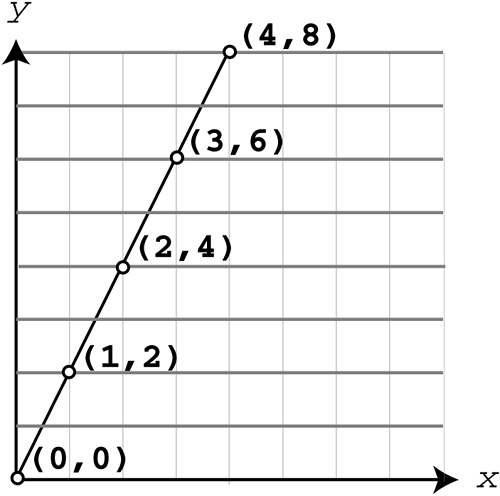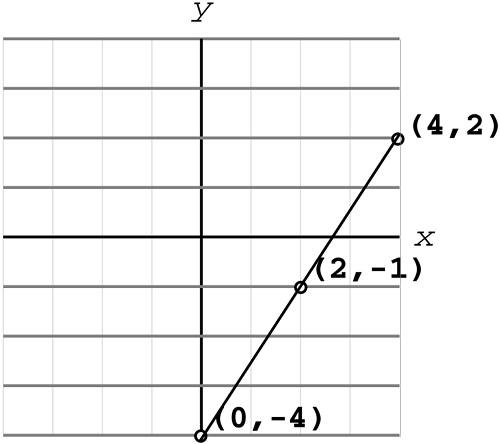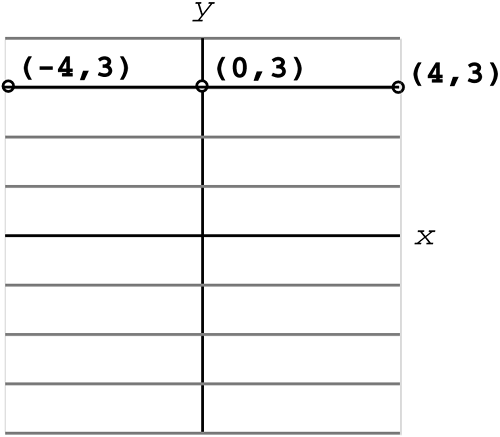The Line Defined
| < Day Day Up > |
| A linear equation is a special kind of function. Remember in the preceding section, when we defined a function by a set of ordered pairs or points? Each of those points is an individual solution for the equation y = 2 x . The complete solution is all the points that satisfy the equation. If you began plotting individual solutions to a linear equation, an interesting pattern would emerge. Look at the table for the linear equation y = 2 x again. The table offers five individual solutions to the equation. Before you look at Figure 1.9, plot these five points and see if you can figure out the pattern. If you're not sure, try some additional solutions. As you plot more and more solutions, a line starts to emerge, as shown in Figure 1.9. This line is the complete solution for the linear equation y = 2 x . Figure 1.9. The complete solution for the linear equation y = 2x. So what is the pattern? That's righta line. That's precisely why it's called a linear equation.
In general, the easiest way to graph a linear equation is to transform the equation so that the y is alone on one side. Then choose a value for x , substitute it in the equation, and find a value for y . Although two ordered pairs are enough to determine the graph of a line, it's better to use a third point as a check. TIP Be smart when choosing values of x ; keep them small and manageable. It's usually helpful to use 0 as one of your x values. Example 1.3: Graphing a LineGraph the equation 3 x 2 y = 8. Solution
Example 1.4: Graphing a Horizontal LineGraph the equation y = 3. SolutionThis one is a little tricky; at first glance it doesn't look like the equation of a line. However, if you think of it as
it matches the A x + B y = C form.
NOTE At this point, we have defined the equation of a line in 2D: A x + B y = C. The next section investigates this linear equation in even more detail and extends it to 3D. Self-AssessmentState whether the following equations are linear (that is, if the complete solution is a line):
Graph the following linear equations:
|
| < Day Day Up > |
EAN: 2147483647
Pages: 143


